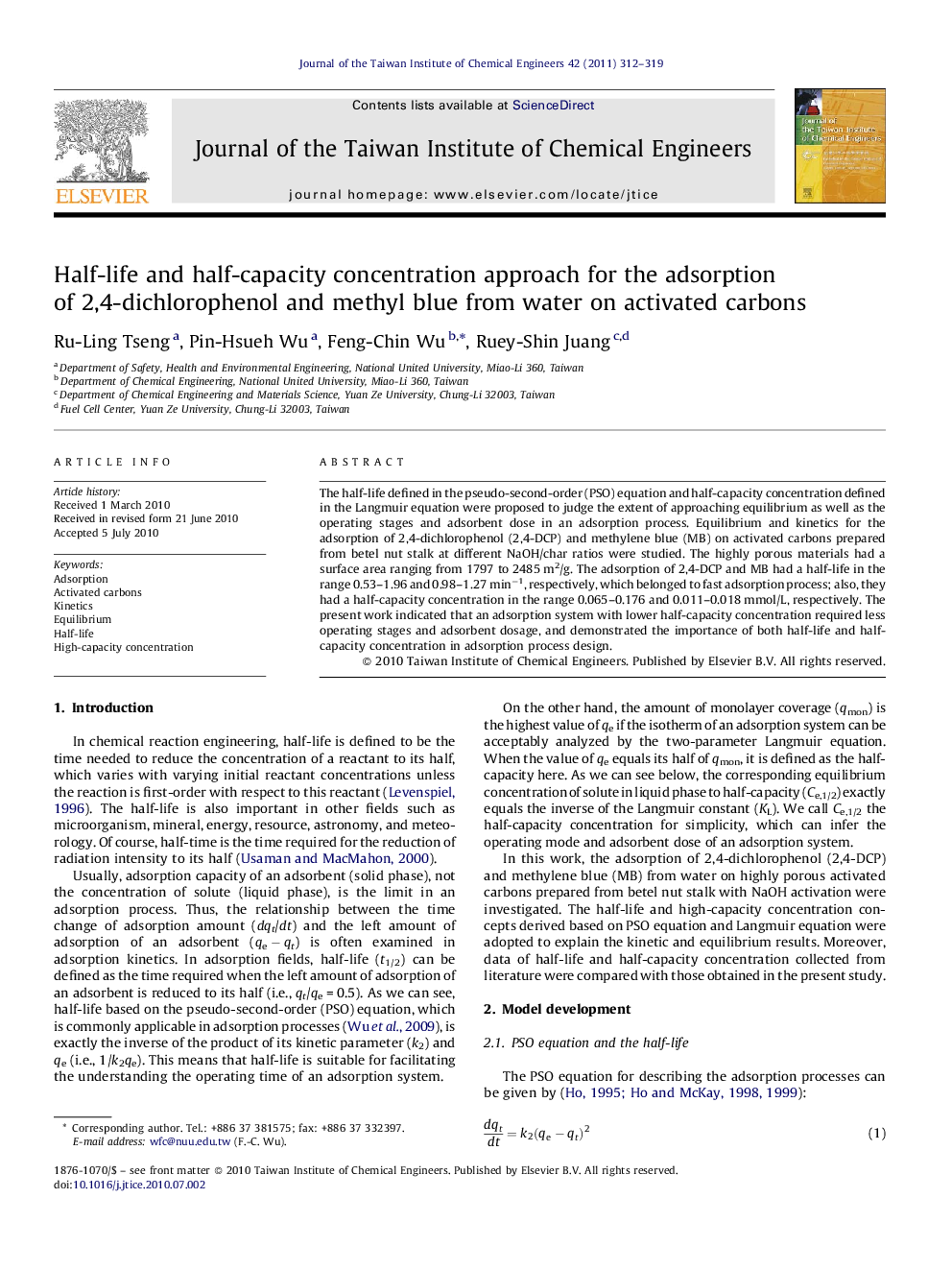| Article ID | Journal | Published Year | Pages | File Type |
|---|---|---|---|---|
| 691726 | Journal of the Taiwan Institute of Chemical Engineers | 2011 | 8 Pages |
The half-life defined in the pseudo-second-order (PSO) equation and half-capacity concentration defined in the Langmuir equation were proposed to judge the extent of approaching equilibrium as well as the operating stages and adsorbent dose in an adsorption process. Equilibrium and kinetics for the adsorption of 2,4-dichlorophenol (2,4-DCP) and methylene blue (MB) on activated carbons prepared from betel nut stalk at different NaOH/char ratios were studied. The highly porous materials had a surface area ranging from 1797 to 2485 m2/g. The adsorption of 2,4-DCP and MB had a half-life in the range 0.53–1.96 and 0.98–1.27 min−1, respectively, which belonged to fast adsorption process; also, they had a half-capacity concentration in the range 0.065–0.176 and 0.011–0.018 mmol/L, respectively. The present work indicated that an adsorption system with lower half-capacity concentration required less operating stages and adsorbent dosage, and demonstrated the importance of both half-life and half-capacity concentration in adsorption process design.
